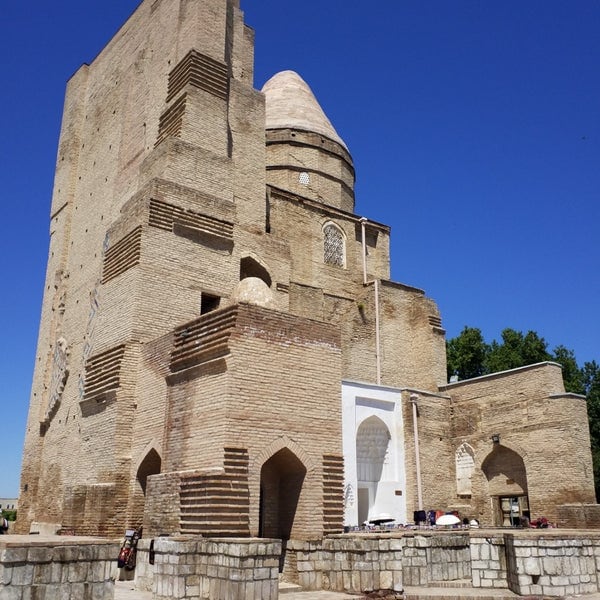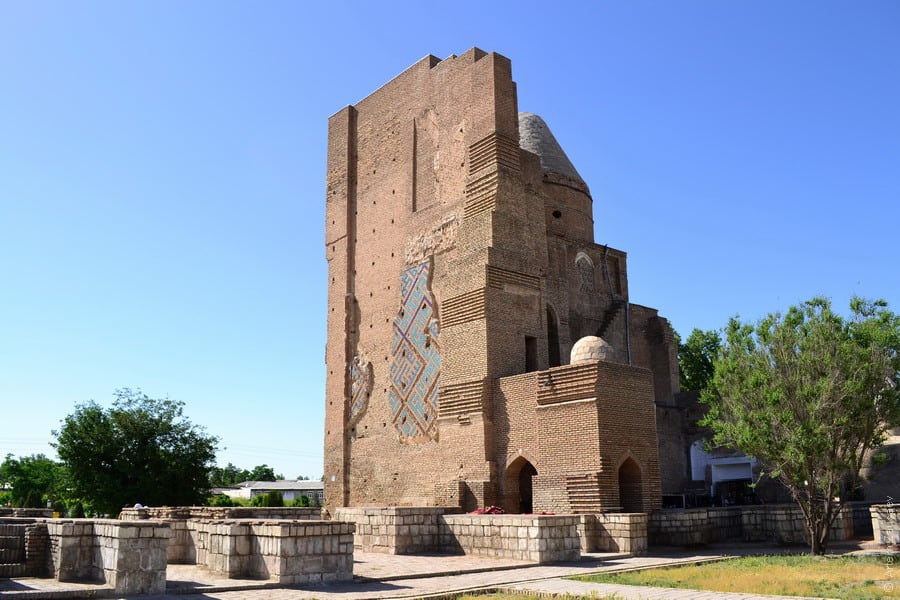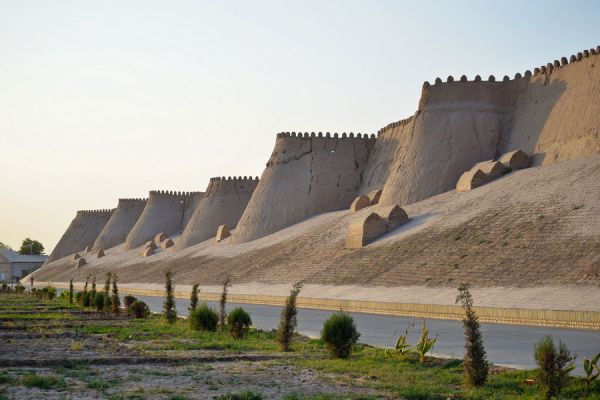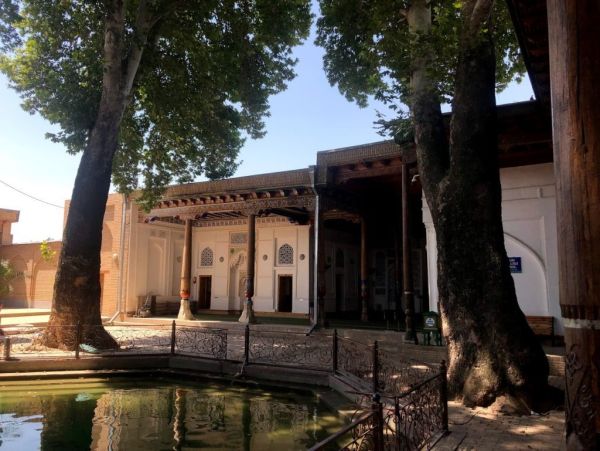Dorus Saodat Memorial Complex with Jahangir Mausoleum
In 1380, in Shakhrisabz, simultaneously with the construction of the Ak-Sarai Palace, the construction of another monumental ensemble, known as Dorus Saodat, began. To this day, the mausoleum of Jahangir and the tomb of Temur, in which he was never buried, have been preserved from the Dorus-Saodat ensemble. The reason for the construction of the memorial complex was a sad event – in 1376, Temur's eldest son Jahangir, whom the ruler loved dearly and was preparing for his heirs, died suddenly, at the age of twenty-two. Residents of Samarkand mourned the unexpected death of the heir to the throne, "a just prince, a brave warrior who flashed across the earth like a rose." The lord himself fell into a deep depression.
The body of Jahangir, who died in Samarkand, was transported to his ancestral homeland in Shakhrisabz, where it was buried in the ancestral cemetery on the territory of the ancient Shakhrisabz Shahristan. Apparently, then Temur conceived the idea of building a mausoleum here for himself and his descendants. But only four years later, after the completion of the campaign in Khorezm, the construction of the funeral complex began. A mausoleum was erected over the grave of the tsarevich, and a madrasa was attached to it, which became the philosophical and spiritual core of the entire complex. The very name of the Dorus-Saodat complex is interpreted by some researchers as "Lessons of power" in Arabic. The madrasah has not been preserved, according to the Arab historian Maliho, it was destroyed in the 17th century on the instructions of Abdullahan.
During archaeological excavations on the territory of the Dorus-Saodat complex, it was revealed that the ziarathona, a memorial room, adjoined the mausoleum of Jahangir from the east. A portal niche of a madrasa with a span of more than 20 meters between the abutments was discovered to the south of the mausoleum. From the portal, the corridor led to the courtyard of the madrasah with the remains of the walls of the khujr. The courtyard was overlooked by deep iwans decorated by Sufis. The stone slabs that paved the niches of the iwans and the portal have been preserved. Dorus-Saodat Madrasah was originally intended not for teaching, but for performing religious and memorial functions. Estates, manors and blooming gardens were assigned to the waqf madrasah, the proceeds of which were intended for the maintenance of the dynastic tomb. According to Rui Gonzalez de Clavijo, Jahangir's madrasah and mausoleum were richly decorated with gold, azure and tiles. There was also a garden with ponds. In 1394, Temur's second son, twenty-nine-year-old Umarshaykh, was killed during the siege of the Kurd fortress in Iran. His body was also taken to Shakhrisabz and buried in Dorus Saodat. Every day, on Temur's orders, twenty boiled sheep were brought to the madrasa to commemorate the souls of his sons buried here.
Temur ordered the construction of a tomb for himself, but it remained unfinished. In 1404, he examined it and was dissatisfied, saying that the entrance to it was low and ordered it to be redone. The mausoleum intended for Temur has not been preserved, however, according to historical documents and as a result of archaeological research, the crypt of Amir Temur was discovered on the territory of the Dorus-Saodat complex. This is one of the most remarkable, majestic and solemn buildings of the Temur era. Judging by the descriptions of contemporaries, the sparkling luxury of the above-ground room of the ziarathana was opposed by the asceticism of the underground crypt. Descending into it from the south side by a steep staircase, you enter a small room, less than 40 square meters. The walls, floors, dome and arches supporting it are made of blocks of light grey marble-like limestone. In the center is a marble sarcophagus embedded in the floor, covered with a huge monolithic slab of marble 11 centimeters thick with five iron rings at the corners and in the middle. On the walls, in archivolts of arches and in medallions, surahs from the Koran and inscriptions are carved in the handwriting, reading: "The dominion belongs to Allah. Only Allah is eternal", "The good is in the hands of Allah, and he is mighty in all things." Fate decided on its own, and Gur-Emir in Samarkand became the burial place of Sahibkiran.
The Dorus-Saodat complex is one of the most romantic and mysterious architectural ensembles in Shakhrisabz.

















